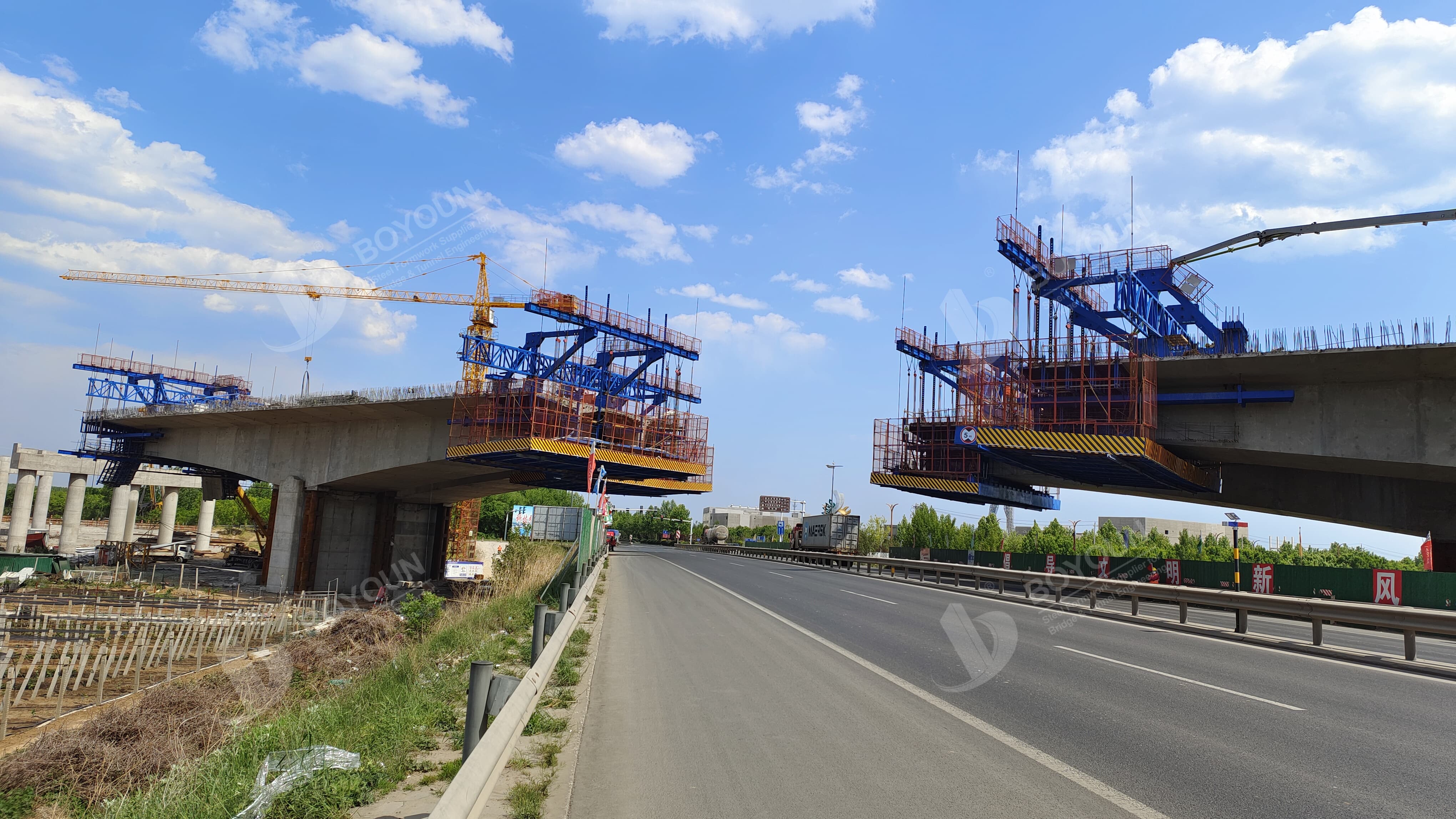Against the backdrop of global infrastructure development accelerating, bridge construction is moving toward more complex working conditions, longer spans, and higher standards. From valley-crossing bridges in mountainous areas to river-crossing super bridges, traditional construction technologies are often limited by terrain and environment. However, the cantilever construction technology for continuous beam bridges, with its core advantages of "aerial operation and phased advancement", has become a key solution to overcome the challenges of bridge construction in complex scenarios. As a core component deeply bound to cantilever construction technology, bridge steel formwork directly determines the efficiency of cantilever construction and the durability of bridge structures through its precision, strength, and adaptability. Combining the application practice of steel formwork, this article will detail the application key points of cantilever construction technology in different scenarios, providing technical references for bridge construction practitioners worldwide.

Cantilever casting construction is one of the main application fields of cantilever construction technology for continuous beam bridges. This construction method utilizes a cantilever platform to realize symmetrical or asymmetrical cantilever casting operations on both sides of bridge piers, significantly improving construction efficiency and quality. During the cantilever casting process, the cantilever platform, serving as the construction platform, not only bears materials such as concrete and steel bars required for casting but also needs to ensure the safety of construction personnel. The design of the cantilever must fully consider its load-bearing capacity and stability to meet construction requirements. The movement and positioning accuracy of the cantilever are also key factors affecting the quality of cantilever casting. By precisely controlling the movement speed and positioning accuracy of the cantilever, the continuity and uniformity of casting can be ensured, thereby improving the overall quality of the bridge. Cantilever casting construction also needs to take into account the impact of concrete shrinkage and creep on the bridge structure. During the construction process, strict temperature control and curing management of concrete are required to reduce the adverse effects caused by shrinkage and creep.
2. Valley-Crossing and River-Crossing Construction
In valley-crossing or river-crossing construction, the cantilever construction technology for continuous beam bridges also demonstrates its unique advantages. These construction environments are often characterized by complex terrain and inconvenient transportation, making traditional construction methods difficult to meet construction needs. However, the cantilever construction technology can achieve construction across obstacles through a cantilever platform suspended on built piers or temporary supports. In valley-crossing or river-crossing construction, the cantilever platform can not only serve as a working platform for construction personnel but also act as a temporary storage and transportation platform for materials. This greatly simplifies the construction process and improves construction efficiency. The safety of the cantilever construction technology is also fully guaranteed. Through reasonable cantilever design and construction safety measures, the safe operation of construction personnel in complex environments can be ensured. Bridge structures in valley-crossing or river-crossing construction are often affected by natural factors such as wind loads and water scouring. The cantilever construction technology can flexibly adjust the construction position and direction to adapt to different natural environments and construction requirements.
3. Long-Span Continuous Beam Construction
The construction of long-span continuous beams is one of the difficulties in bridge construction, and traditional construction methods are often unable to meet the construction needs of long-span bridges. However, the cantilever construction technology can solve the construction challenges of long-span bridges by setting up cantilever platforms on both sides of the bridge to realize symmetrical or asymmetrical cantilever casting operations. In the construction of long-span continuous beams, the cantilever platform can not only serve as a working platform for construction personnel but also act as a temporary support platform for concrete casting and steel bar binding. This greatly simplifies the construction process and improves construction efficiency and quality. The stability and safety of the cantilever construction technology are also fully guaranteed. Through reasonable cantilever design and construction safety measures, the stability and safety during the construction process can be ensured.
From precise shape control in cantilever casting to wind and impact resistance in valley-crossing and river-crossing projects, and to stable casting of long-span beam bodies, every breakthrough in the cantilever construction technology for continuous beam bridges is inseparable from the support of high-quality steel formwork. As a manufacturer specializing in bridge steel formwork, we have always focused on "meeting the needs of cantilever construction". Through customized designs (such as lightweight cantilever formwork and high-precision special-shaped steel formwork), strict welding processes, and flatness control, we ensure that the formwork perfectly fits the cantilever platform. This not only reduces adjustment time during construction but also guarantees the linearity and strength of the beam body after concrete casting. In the future, as cantilever construction technology upgrades toward intelligence, we will also continue to develop new steel formwork materials and modular designs, helping more bridge projects around the world achieve the construction goals of "efficient construction and durable quality", and injecting more solid strength into the development of the global bridge industry.

International Department: Room 2507-2508, Tower C of Wanda Plaza, Tongzhou District, Beijing 101118, China.
+86-13021287080
info@boyoun.cn